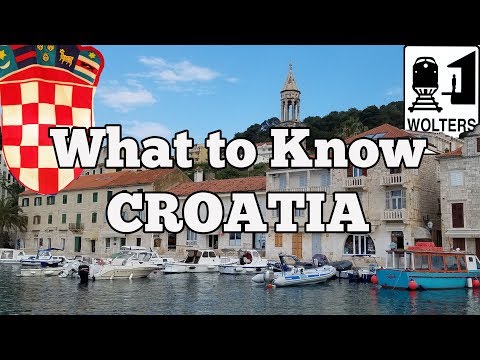
Nestled on the crossroads of Central and Southeast Europe along the shimmering Adriatic Sea, Croatia is a country that effortlessly combines historical richness with contemporary charm. From its stunning coastline adorned with pristine beaches and world-famous islands like Hvar and Korčula, to its charming medieval towns such as Dubrovnik and Split, Croatia offers a myriad of attractions that cater to all types of travelers. However, before packing your bags for this enchanting European gem, here are some essential tips and insights to help you make the most out of your Croatian adventure.
### 1. Best Time to Visit
Croatia boasts a generally favorable climate but choosing the right time for your visit can enhance your experience significantly. The peak tourist season is during the summer months from June to August, when the weather is sunny and warm, perfect for beach activities and island-hopping. However, these months also see the highest crowds and prices. For a more tranquil yet equally enjoyable visit, consider traveling during the shoulder seasons — late spring (April to May) or early autumn (September to October). During these periods, temperatures are still pleasant, and many tourist services are still available but with fewer crowds.
### 2. Currency & Costs
Croatia uses the Croatian Kuna (HRK) as its currency. While euros might be accepted in some tourist areas, it’s wise to have kunas at hand for everyday transactions. Generally speaking, Croatia offers good value compared to other European destinations; however, prices can skyrocket in popular areas during peak season. To save money, consider dining at local taverns known as ‘konoba’, using public transportation, and staying in guesthouses or apartments instead of hotels.
### 3. Language
The official language is Croatian; however English is widely spoken by most locals involved in tourism especially in major cities and tourist hotspots. Learning a few basic Croatian phrases such as ‘Hvala’ (Thank you) and ‘Dobar dan’ (Good day) can be appreciated by locals.
### 4. Cultural Insights
Croatians are generally warm and hospitable people but also value personal space and privacy. When visiting religious sites like churches or cathedrals ensure appropriate dress – covering shoulders and knees as a sign of respect.
### 5. Transportation
Croatia is well-connected by roads and ferries especially along the coast making it relatively easy to travel between cities or islands. Consider renting a car if you plan on exploring multiple regions or islands at your own pace; otherwise buses remain an affordable option for inter-city travel. For island hopping consider using local ferries which can be economical especially if used without accompanying vehicle.
### 6 . Must-Visit Places
* **Dubrovnik**: Known famously as ‘The Pearl of the Adriatic’, this stunning city offers remarkable old-world charm with its impressive walls surrounding centuries-old buildings.
* **Split**: Home to Diocletian’s Palace – an ancient palace built for Emperor Diocletian which today forms about half of Old Town Split.
* **Plitvice Lakes National Park**: A must-visit for nature lovers featuring breathtaking lakes interconnected by stunning waterfalls.
* **Istria Peninsula**: Famous for its Italian-like charm thanks mostly due its history under Venetian rule – offering delicious cuisine wine routes picturesque hill towns like Motovun.
### 7 . Local Cuisine
Do not leave Croatia without trying some local dishes such as ‘čevapi’ (small sausages), ‘pasticada’ (beef stew), or seafood along Dalmatian coast served fresh caught daily paired with local wines like Malvazija or Plavac Mali.
### 8 . Connectivity
While Wi-Fi is commonly available in hotels cafes restaurants connectivity may be slower on some islands more remote areas so plan accordingly especially if reliant on internet access during travels.
By remembering these pointers before planning trip down-to-earth heart Europe’s beautiful regions awaits unravel—where history dances along waves sea meets timeless architecture under Mediterranean sun!
